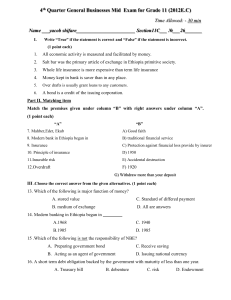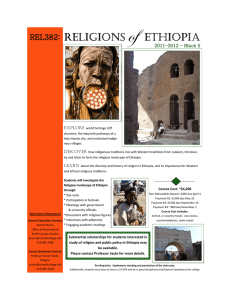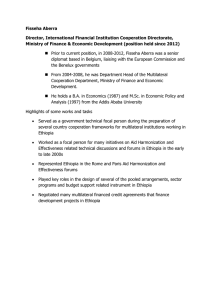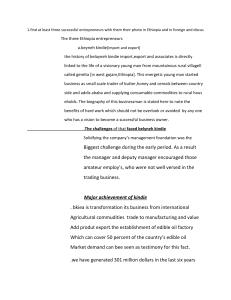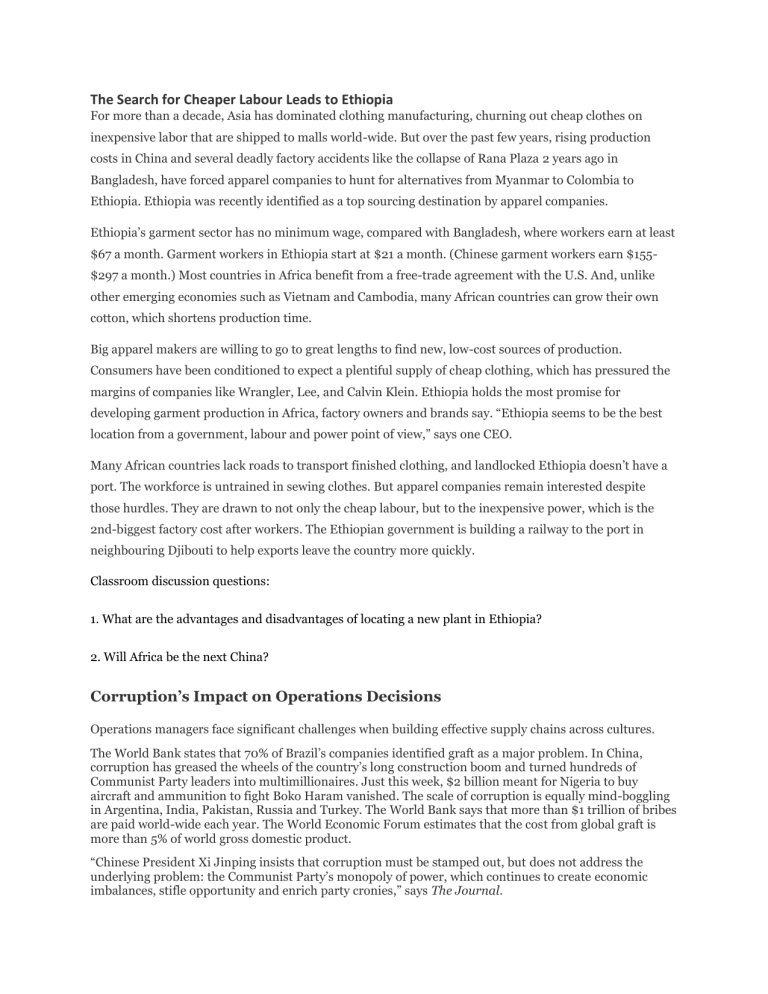
The Search for Cheaper Labour Leads to Ethiopia For more than a decade, Asia has dominated clothing manufacturing, churning out cheap clothes on inexpensive labor that are shipped to malls world-wide. But over the past few years, rising production costs in China and several deadly factory accidents like the collapse of Rana Plaza 2 years ago in Bangladesh, have forced apparel companies to hunt for alternatives from Myanmar to Colombia to Ethiopia. Ethiopia was recently identified as a top sourcing destination by apparel companies. Ethiopia’s garment sector has no minimum wage, compared with Bangladesh, where workers earn at least $67 a month. Garment workers in Ethiopia start at $21 a month. (Chinese garment workers earn $155$297 a month.) Most countries in Africa benefit from a free-trade agreement with the U.S. And, unlike other emerging economies such as Vietnam and Cambodia, many African countries can grow their own cotton, which shortens production time. Big apparel makers are willing to go to great lengths to find new, low-cost sources of production. Consumers have been conditioned to expect a plentiful supply of cheap clothing, which has pressured the margins of companies like Wrangler, Lee, and Calvin Klein. Ethiopia holds the most promise for developing garment production in Africa, factory owners and brands say. “Ethiopia seems to be the best location from a government, labour and power point of view,” says one CEO. Many African countries lack roads to transport finished clothing, and landlocked Ethiopia doesn’t have a port. The workforce is untrained in sewing clothes. But apparel companies remain interested despite those hurdles. They are drawn to not only the cheap labour, but to the inexpensive power, which is the 2nd-biggest factory cost after workers. The Ethiopian government is building a railway to the port in neighbouring Djibouti to help exports leave the country more quickly. Classroom discussion questions: 1. What are the advantages and disadvantages of locating a new plant in Ethiopia? 2. Will Africa be the next China? Corruption’s Impact on Operations Decisions Operations managers face significant challenges when building effective supply chains across cultures. The World Bank states that 70% of Brazil’s companies identified graft as a major problem. In China, corruption has greased the wheels of the country’s long construction boom and turned hundreds of Communist Party leaders into multimillionaires. Just this week, $2 billion meant for Nigeria to buy aircraft and ammunition to fight Boko Haram vanished. The scale of corruption is equally mind-boggling in Argentina, India, Pakistan, Russia and Turkey. The World Bank says that more than $1 trillion of bribes are paid world-wide each year. The World Economic Forum estimates that the cost from global graft is more than 5% of world gross domestic product. “Chinese President Xi Jinping insists that corruption must be stamped out, but does not address the underlying problem: the Communist Party’s monopoly of power, which continues to create economic imbalances, stifle opportunity and enrich party cronies,” says The Journal. Corruption doesn’t come from nowhere. It is a result of economic and political institutions that empower elites while shutting out the rest of the country. That empowerment lets politicians, bureaucrats and soldiers grab resources and get wealthy from bribes. What allows them to get away with it is the absence of democratic accountability and effective checks and balances, like the rule of law and press freedom. Without fundamental change in these institutions, it is indeed difficult for OM executives to locate and manage global supply chains. Classroom discussion questions: 1. Why is corruption such a major OM issue? 2. What can Operation managers do to assure ethical supply chains?

